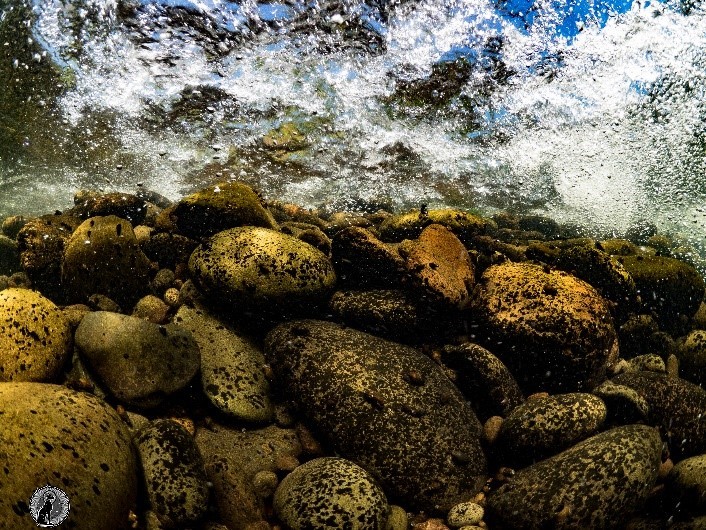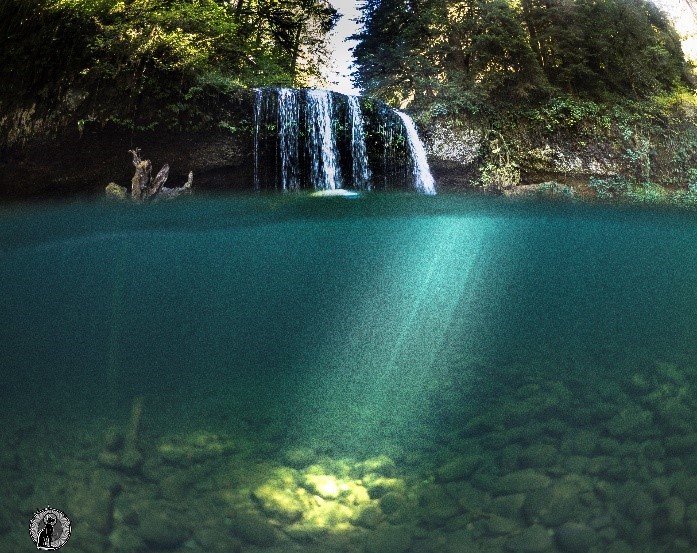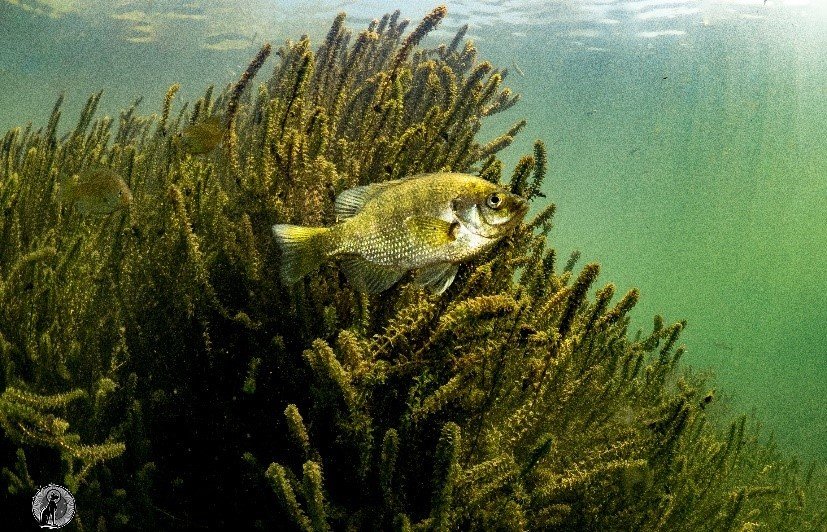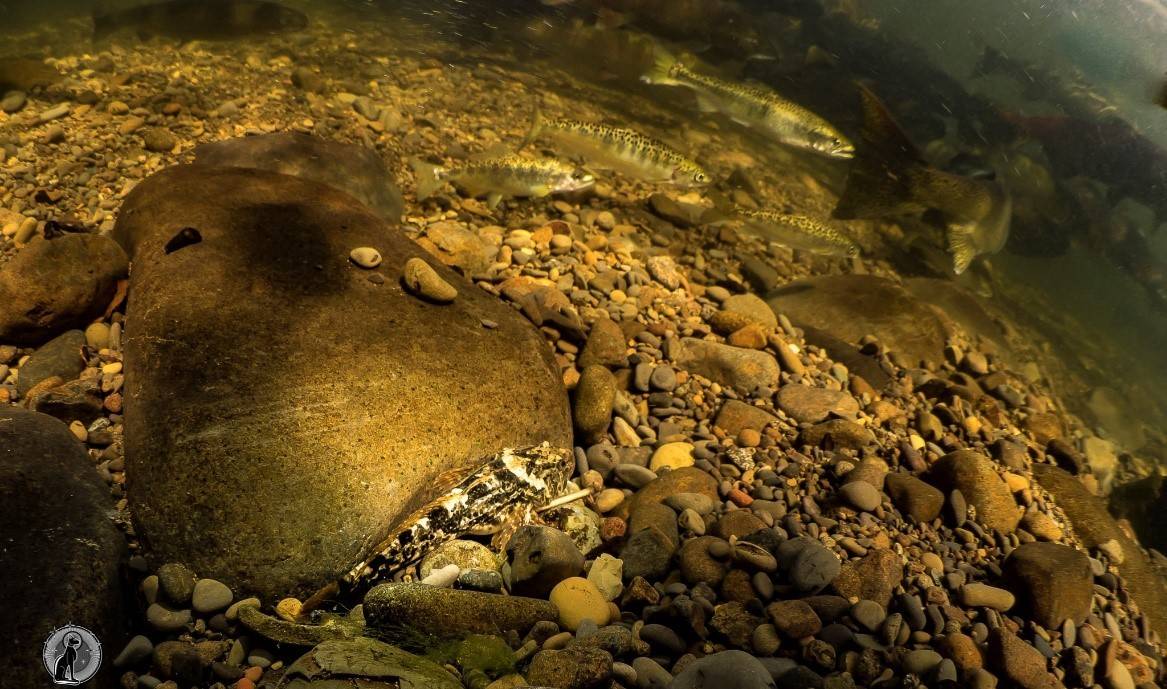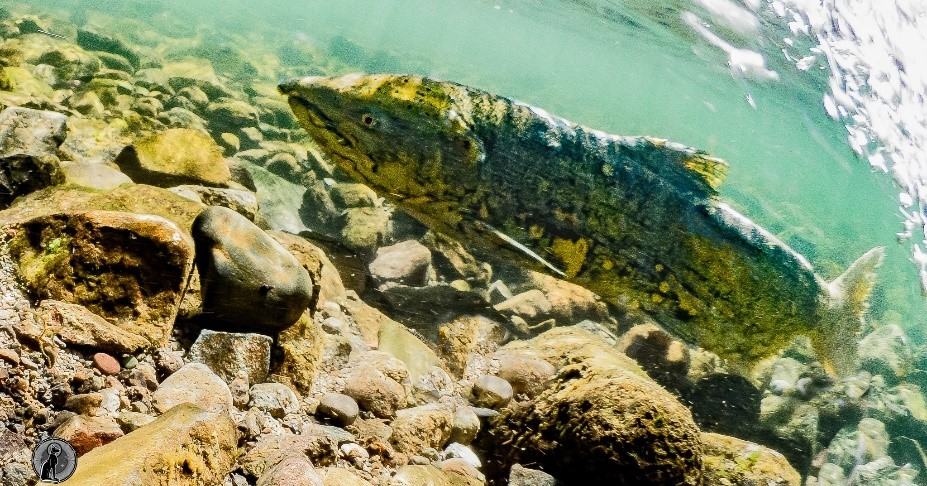Photo / Video News & Reviews
River Diving
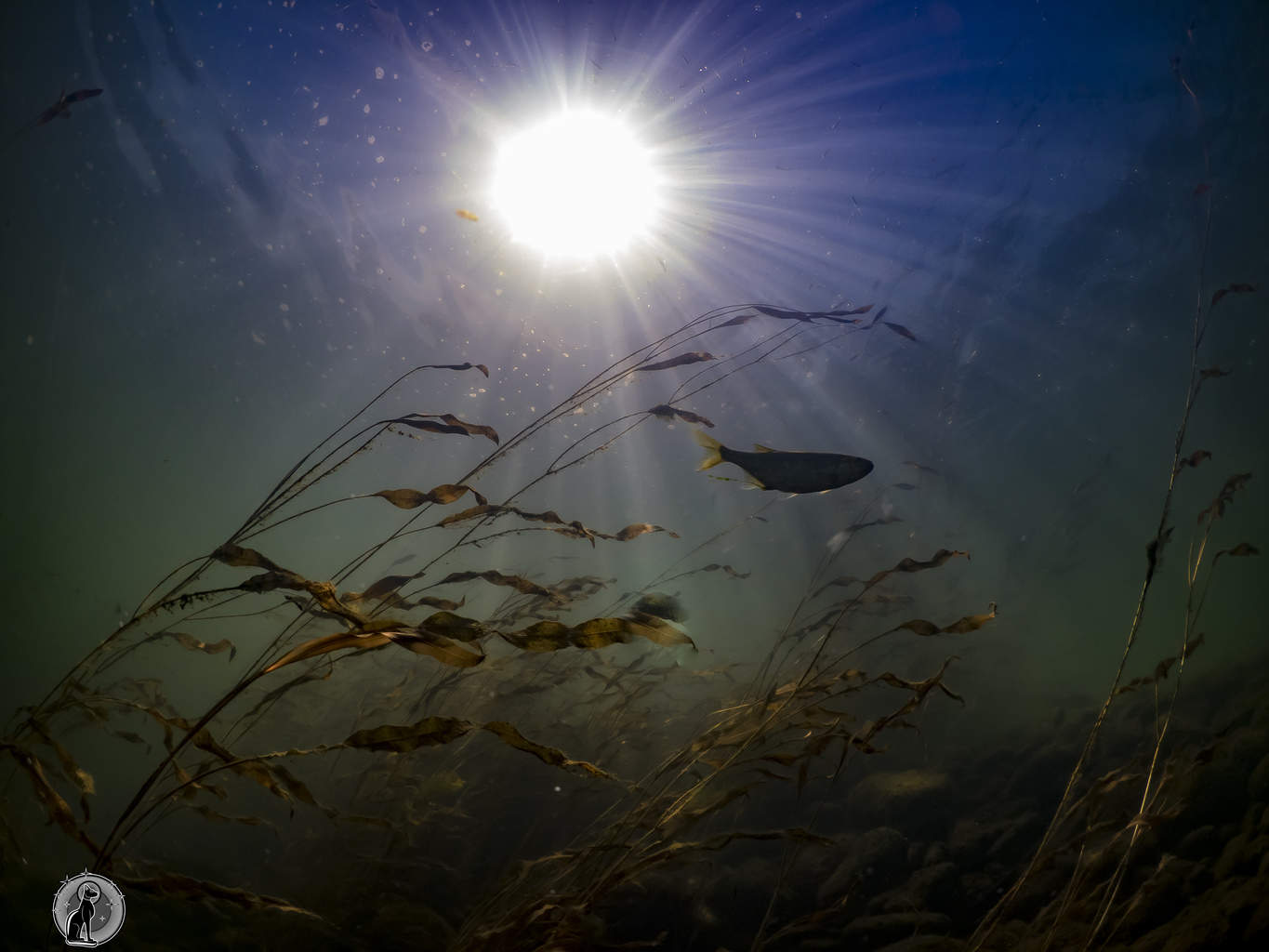
If you like diving and underwater photography as much as I do and you live 3. 5 hours inland from a good dive site, you might find yourself looking to a new venue to enjoy. I will openly admit I had a mission as I wanted pictures of freshwater fish, especially salmon. Thus began my river diving adventures this summer.
I am inspired by the work of Martin Edge and Eiko Jones and what they do with light underwater (the “God Beams” as the topside photographers say) and was thinking about some ways to do some new things I had in mind with long exposure and ambient light. As a lot of river diving here in Oregon can be relatively shallow in the rivers (relatively shallow being less than 25 feet). I was really wanting to work with ambient lighting in clear waters and be on eye level with the royalty of the fish world – salmon and steelhead trout.
The next logical thing to do was put together an investigatory dive. Equipment was my first consideration starting with photographic gear. I packed my Olympus OMD-E1 in a Nauticam housing with a Panasonic Lumix 8mm fisheye lens and a 4.33 dome port and then started to think about dive gear. I was diving the McKenzie River in Oregon which has gin clear visibility; however, it is also a frigid 49 degrees F, so I packed my Bare crushed neoprene drysuit and whites fusion thermals. I packed my warm water fins as they are shorter and lighter than my Apollo biofins, and I selected two aluminum 80 tanks with 3000 psi a piece as my steel 100 tanks weigh 40 pounds and I didn’t know what access would be like or how long I would be walking with gear on. My lightweight warmwater backplate and regulator was added to the gear pile with a 12 pound weight belt plus 4 extra pounds – surely that would be plenty. It was not, which I discovered later.
River diving entails a few different things that you may or may not be used to. Number one is current, and in some cases, a LOT of current. You may be wearing 20-25 pounds in a wetsuit/drysuit in 5 feet of water so you can stay down. Freshwater is deceiving as you do need less weight than salt, but you have to overweight to account for current. I also have had to anchor myself along the bottom in interesting ways with a robust stainless steel reef stick that I own and by shooting with one hand and hanging on to logs, rocks, etc. with my other hand.
Fish are often found under tree roots so this can be very good shooting. I also did some shooting where I lay in the middle of a big riffle (stretch of fast moving water) and just shot water flowing over me while I anchored in with my stainless steel reef stick.My first dive I did not think about extra weight and I was soon sailing along like a balloon underwater getting blown through culverts and into large woody debris piles until I started to anchor myself by grabbing onto stuff and by putting rocks in my pockets for extra weight. Not getting my camera knocked out of my hands or rubbing the dome port glass on rocks was also a challenge. I also used my feet to push against logs so I could face into the current and shoot.
Number two is temperature. Some rivers you can go with little or no exposure suit, however I wouldn’t recommend that due to rocks, logs, etc scraping you up. My home rivers in the summer range from 65 to 48 degrees F. I found that for me I like the freedom of a wetsuit and for temperatures down to 55 degrees I was good in a 5mm wetsuit. Below 55 I could last about 20 minutes and then my teeth were chattering. At that point I was using my crushed neoprene drysuit with thermals.
I can go gloveless to 50 degrees but below that I would wear 5mm gloves. I usually always wear a hood to keep my hair out of my way. I’m toasty with this set up but temperature is a personal thing.
I recently hiked into a mountain waterfall and skin dove with my 5mm wetsuit to try and get some good over and under shots. The water was 47 degrees F which was pretty chilly but 20 minutes of being chilly was worth it for the shots I got there.
Number three is access and the diving style. Access to some rivers is back up to the side and jump in while with others you have to walk along the riverbank to get to a place you can safely access. Some rivers you have to climb down the sides and these sides can be steep and/or rocky and doing this with gear on can be a strenuous experience. Not falling down the side of a river on top of your camera gear and rolling into blackberry bushes on the way down is really the goal. Being somewhat nimble and strong is a plus for these rivers. River diving is not about calmly swimming along with perfect buoyancy most of the time. Many times you are crawling in between pools if water is low and sometimes you have to get out and walk to the next pool. Sometimes you can get into deep pools and these are really nice places to shoot when fish are holding there. These you can swim around, although I like to employ stealth technique and sit or lie calmly on the bottom until the fish are done being freaked out. I then let them get back to their regular business so I can take shots.
Some observations on fish behavior… I found that juvenile fish are much more curious than adults. Some adult fish can be very skittish, and some can be very bold and rush right up to you.
Freshwater sculpin are very fun to photograph and they are full of attitude as their marine cousins and they will fearlessly swim right up to you and sit right in front of your dome port. They are ferocious predators and will attack anything they think could fit in their mouth. Warmwater fish such as bass or bluegill are the most curious of the fish. They will literally photobomb every picture you take and they will nibble on your hands, mask, face, etc.
Male smallmouth bass are quite beautiful when they are mating or guarding their nests and can make striking pictures. Similar behavior is exhibited by native minnows such as dace, shiners, chub, and suckers.
I am currently working on a series of shoots with fall Chinook salmon that have returned from the ocean after 4-5 years of being away from their natal streams. How these fish find their way back to the very place they emerged from the gravel is an amazing question to me. Even near death these fish command respect as they have returned to fulfill a mission that started over 5,000 years ago. I wax poetic here as I am a fisheries biologist by trade.
I do NOT dive alone EVER in rivers. There are too many variables to not have a buddy or shore support. Yes, you have a BCD and regulator, however if you get stuck in a large woody debris pile or hung up on the bottom for some reason there could be a very bad outcome. Having another pair of eyes on you is a good thing. If you bring along a creative “dry” photographer they can take good topside pictures. I have not needed to tether up due to high river current to date but having someone watching your tether at all times is a smart thing to plan for. I usually do some scouting in advance for possible sites so I know what to bring.
I might add that I am eternally grateful to my cohorts in the fishery business who have clued me in to good sites and times to go and in some cases even driven me around and put me in on some great fish action. Treat these people well and buy them beer as they can be key to some beautiful pictures.
My last plug is for quiet respect of fish, especially if you are somewhere where they are spawning. This is not a good time to be upsetting fish and driving them away from their spawning beds. Better to wait until after the spawning or before to get pictures. There is a fine line between harassment and annoyance so please understand that line and respect it.
I love diving our beautiful Pacific Northwest seas but I also feel that river diving adds a fun and new slant of the beauty of the underwater world and you definitely get to see things you do not see in the ocean environment… plus you don’t have to soak your gear so much after you dive freshwater!
You can see more of Laura’s underwater photography here.
Blogs
Diver Discovering Whale Skeletons Beneath Ice Judged World’s Best Underwater Photograph
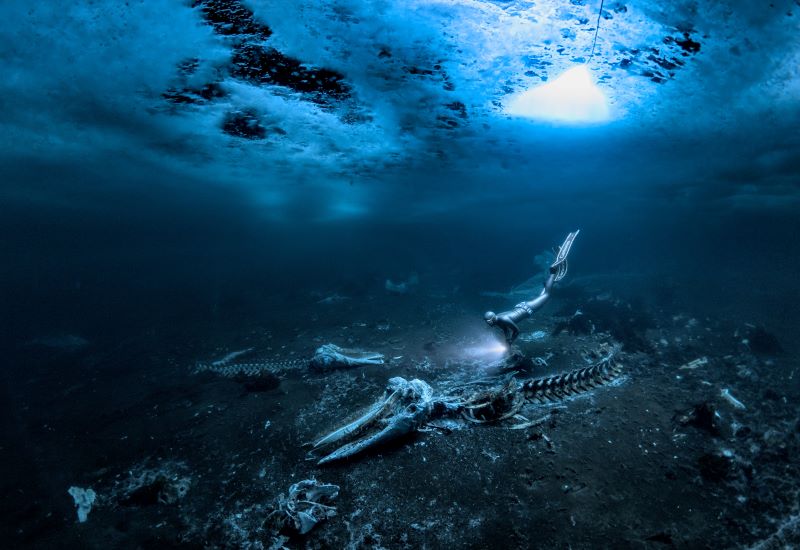
An emotive photograph showing a freediver examining the aftermath of whaling sees
Alex Dawson from Sweden named Underwater Photographer of the Year 2024. Dawson’s
photograph ‘Whale Bones’ triumphed over 6500 underwater pictures entered by underwater
photographers from around the world.
“Whale Bones was photographed in the toughest conditions,” explains chair of judging
panel Alex Mustard, “as a breath-hold diver descends below the Greenland ice sheet to bear
witness to the carcasses. The composition invites us to consider our impact on the great
creatures of this planet. Since the rise of humans, wild animals have declined by 85%. Today,
just 4% of mammals are wildlife, the remaining 96% are humans and our livestock. Our way
needs to change to find a balance with nature.”
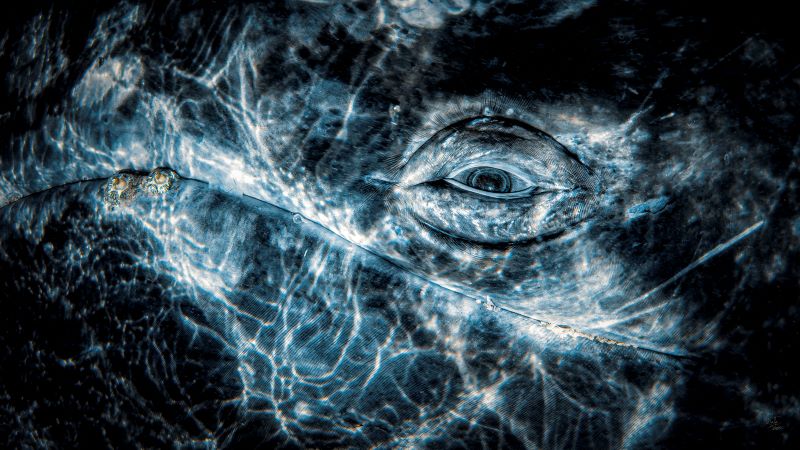
Photo: Rafael
Fernandez Caballero
Whales dominated the winning pictures this year with Spanish photographer Rafael
Fernandez Caballero winning two categories with his revealing photos of these ocean giants:
a close up of a grey whale’s eye and an action shot of a Bryde’s whale engulfing an entire bait
ball, both taken in Magdalena Bay, Baja California, Mexico. Fernandez Caballero took ‘Grey
Whale Connection’ while drifting in a small boat, holding his camera over the side in the water
to photograph the curious whale. ‘The End Of A Baitball’ required Fernandez Caballero to dive
down and be in exactly the right place at the moment the whale lunged. “The photo shows
the high speed attack,” he said, “with the whale engulfing hundreds of kilograms of sardines
in one bite — simply unforgettable to see predation on such a scale.”
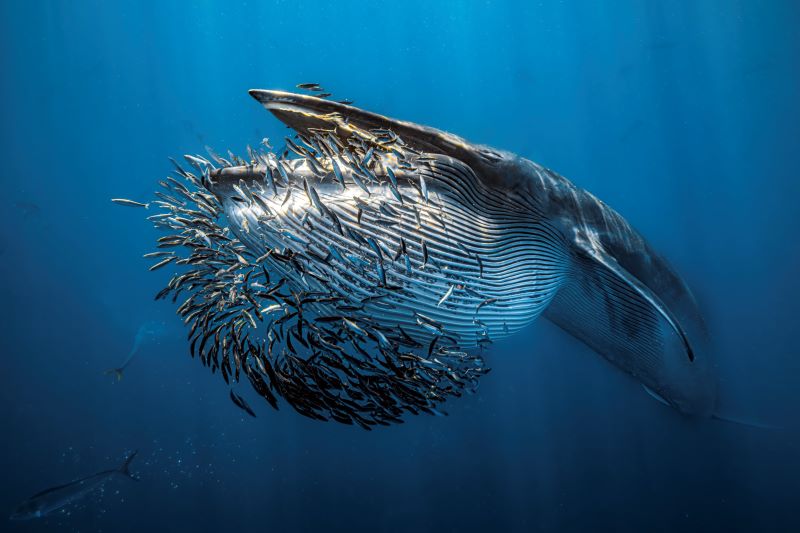
Photo: Rafael
Fernandez Caballero
Lisa Stengel from the United States was named Up & Coming Underwater Photographer of the Year 2024 for her image of a mahi-mahi catching a sardine, in Mexico. Stengel used both a very fast shutter speed and her hearing to catch the moment. “If you listen there’s an enormous amount of sound in the ocean,” she explained. “The action was too fast to see, so I honed in on the sound of the attacks with my camera to capture this special moment.”
“It is such an exciting time in underwater photography because photographers are capturing such amazing new images, by visiting new locations and using the latest cameras,”
commented judge Alex Mustard. “Until this year I’d hardly ever see a photo of a mahi mahi,
now Lisa has photographed one hunting, action that plays out in the blink of an eye.”
The Underwater Photographer of the Year contest is based in the UK, and Jenny Stock,
was named as British Underwater Photographer of the Year 2024 for her image “Star
Attraction”, which finds beauty in species of British wildlife that are often overlooked.
Exploring the west coast of Scotland, Stock explained “in the dark green depths my torch
picked out the vivid colours of a living carpet of thousands of brittle stars, each with a
different pattern. I was happily snapping away, when I spotted this purple sea urchin and I
got really excited.”
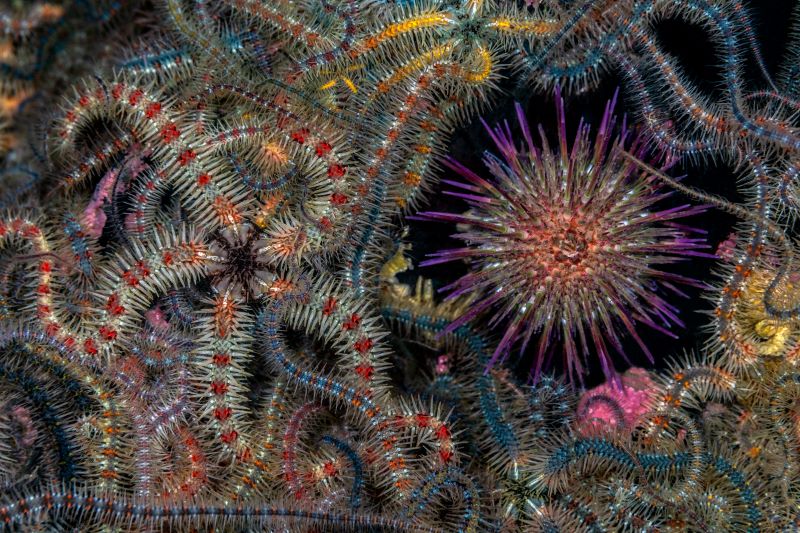
Photo: Jenny Stock
In the same contest, Portuguese photographer, Nuno Sá, was named ‘Save Our Seas
Foundation’ Marine Conservation Photographer of the Year 2024, with his photo ‘Saving
Goliath’, taken in Portugal. Sá’s photo shows beachgoers trying to save a stranded sperm
whale. The picture gives us hope that people do care and want to help the oceans, but also
warns us that bigger changes are needed. “The whale had been struck by a ship and its fate
was sealed,” explains Sá. “An estimated 20,000 whales are killed every year, and many more
injured, after being struck by ships-and few people even realise that it happens.”
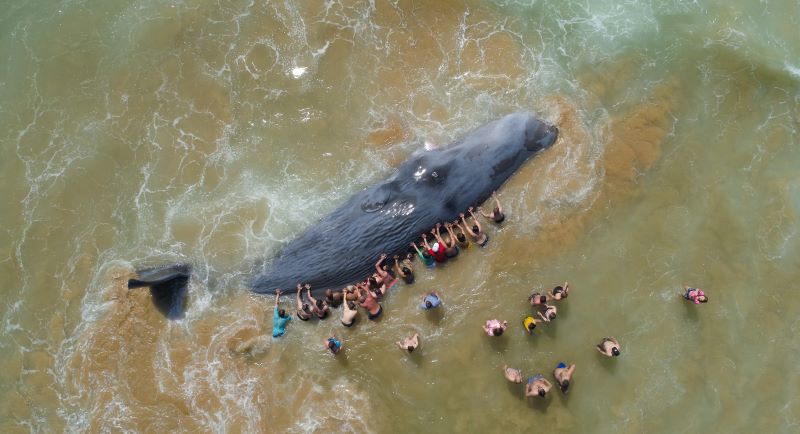
Photo: Nuno Sá
More winning images can be found at www.underwaterphotographeroftheyear.com.
About Underwater Photographer of the Year
Underwater Photographer of the Year is an annual competition, based in the UK, that celebrates photography beneath the surface of the ocean, lakes, rivers and even swimming pools, and attracts entries from all around the world. The contest has 13 categories, testing photographers with themes such as Macro, Wide Angle, Behaviour and Wreck photography, as well as four categories for photos taken specifically in British waters. The winners were announced in an award ceremony in Mayfair, London, hosted by The Crown Estate. This year’s UPY judges were experienced underwater photographers Peter Rowlands, Tobias Friedrich and Dr Alexander Mustard MBE.
Header image: Underwater Photographer of the Year 2024 winner Alex Dawson
News
World’s Best Underwater Photographers Unveil Breathtaking Images at World Shootout 2023
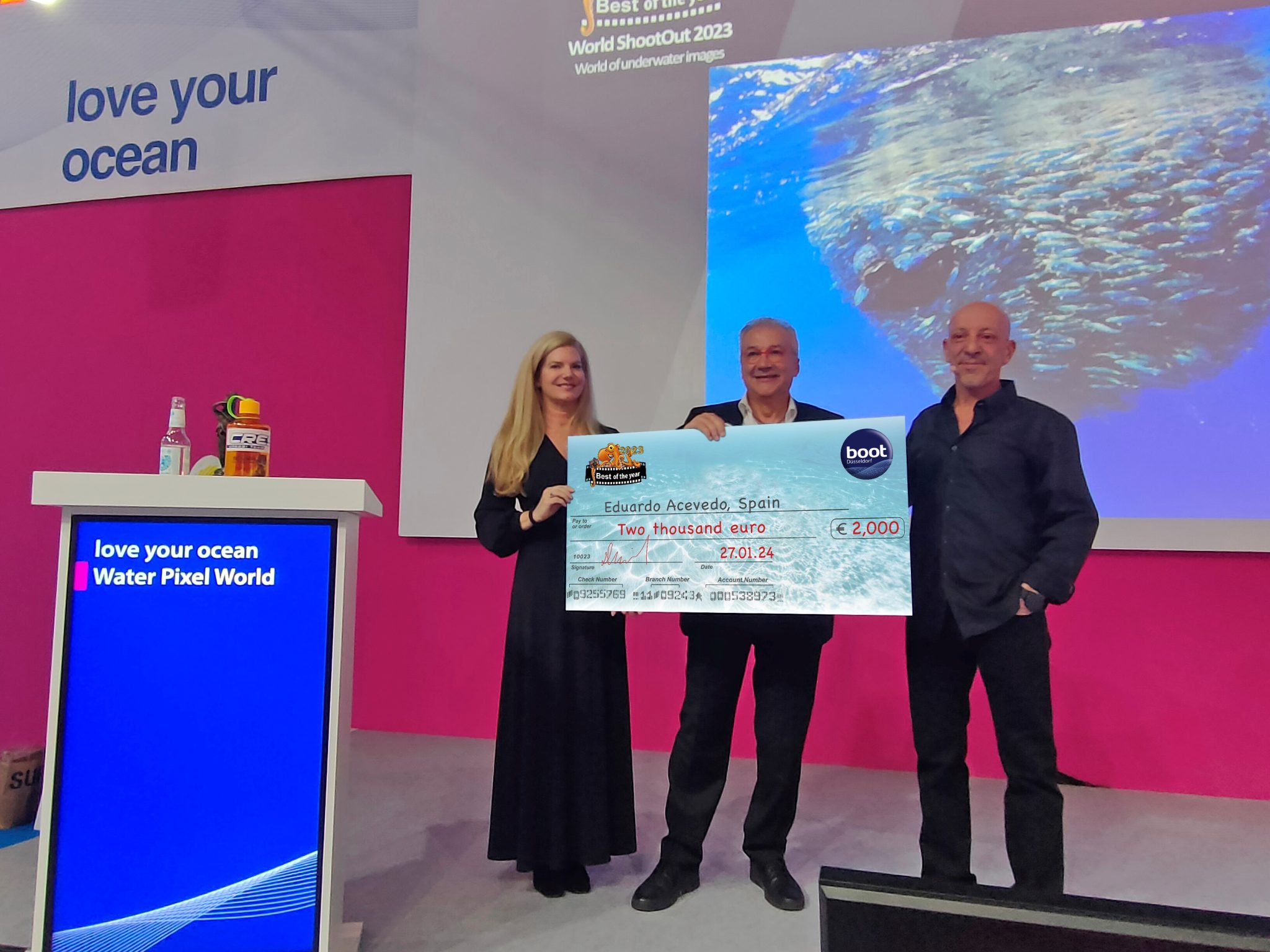
The winners of the prestigious World Shootout 2023 underwater photography competition were announced at this year’s BOOT Show, captivating audiences at the world’s largest diving and water sports exhibition in Dusseldorf, Germany. Hundreds of photographers from 54 countries competed across nine categories, pushing the boundaries of creativity and technical skill.
Grand Prize Winners
- Picture of the Year: Spanish photographer Eduardo Acevedo “secured” the top Honor with the prestigious prize the “boot Dusseldorf Director’s Prize, earning an Andromeda statuette and a €2,000 cash prize.
- Best 5 Images Portfolio: Luc Rooman from Belgium triumphed in this category, winning a dream 4-week diving trip for two to Papua New Guinea, valued at $18,900.
- Amateur Photographer: Alexandra Ceurvorst from the USA impressed the judges with her talent, taking home the 1,000 € cash prize award.
Celebrating Diversity and Innovation
This year’s competition saw 11,680 entries from 964 photographers, showcasing a remarkable spectrum of skills and perspectives. From the intricate wonders of Macro photography to the beauty of “Black Water”, the “Underwater Fashion” category added a touch of artistry and innovation, while the ever-important ” Environmental & Conservation” category served as a powerful reminder of the need to protect these fragile ecosystems.
Looking Ahead: AI and Ocean Conservation
World Shootout founder and producer David Pilosof unveiled an exciting addition for the 2024 competition: this year the Environmental category will be focusing on the impact of plastic on our oceans and future.
This category will embrace the potential of AI or other editing software as a tool to amplify the conservation message.
Entrants will submit campaigns of three original underwater photographs dealing with plastic pollution, along with their final AI assistance processing. This innovative approach encourages artistic expression while raising awareness about a critical environmental issue.
Explore the Stunning Collection
Discover the complete album of competition entries by clicking here.
For Low-resolution photos of finalist entries in eight categories, click here.
-

 News3 months ago
News3 months agoHone your underwater photography skills with Alphamarine Photography at Red Sea Diving Safari in March
-

 News3 months ago
News3 months agoCapturing Critters in Lembeh Underwater Photography Workshop 2024: Event Roundup
-

 Marine Life & Conservation Blogs2 months ago
Marine Life & Conservation Blogs2 months agoCreature Feature: Swell Sharks
-

 Blogs2 months ago
Blogs2 months agoMurex Resorts: Passport to Paradise!
-

 Blogs2 months ago
Blogs2 months agoDiver Discovering Whale Skeletons Beneath Ice Judged World’s Best Underwater Photograph
-

 Marine Life & Conservation2 months ago
Marine Life & Conservation2 months agoSave the Manatee Club launches brand new webcams at Silver Springs State Park, Florida
-

 Gear Reviews3 months ago
Gear Reviews3 months agoGear Review: Oceanic+ Dive Housing for iPhone
-

 Gear Reviews2 weeks ago
Gear Reviews2 weeks agoGEAR REVIEW – Revolutionising Diving Comfort: The Sharkskin T2 Chillproof Suit


